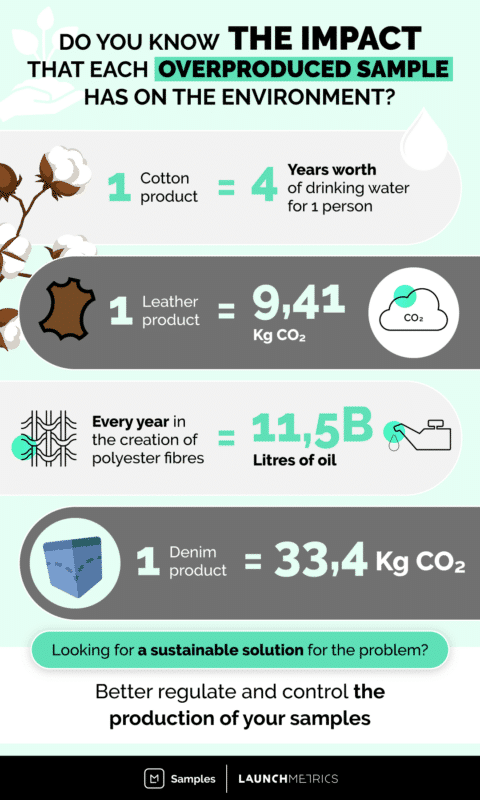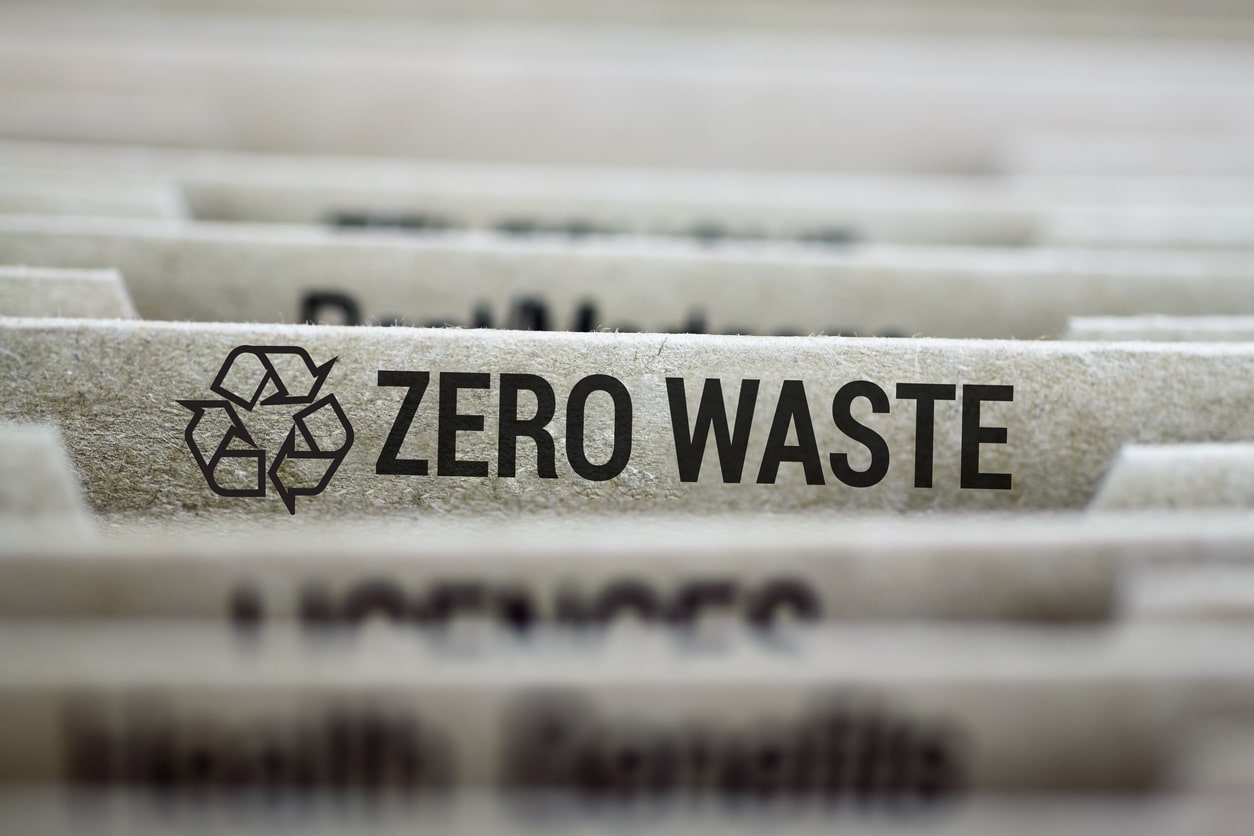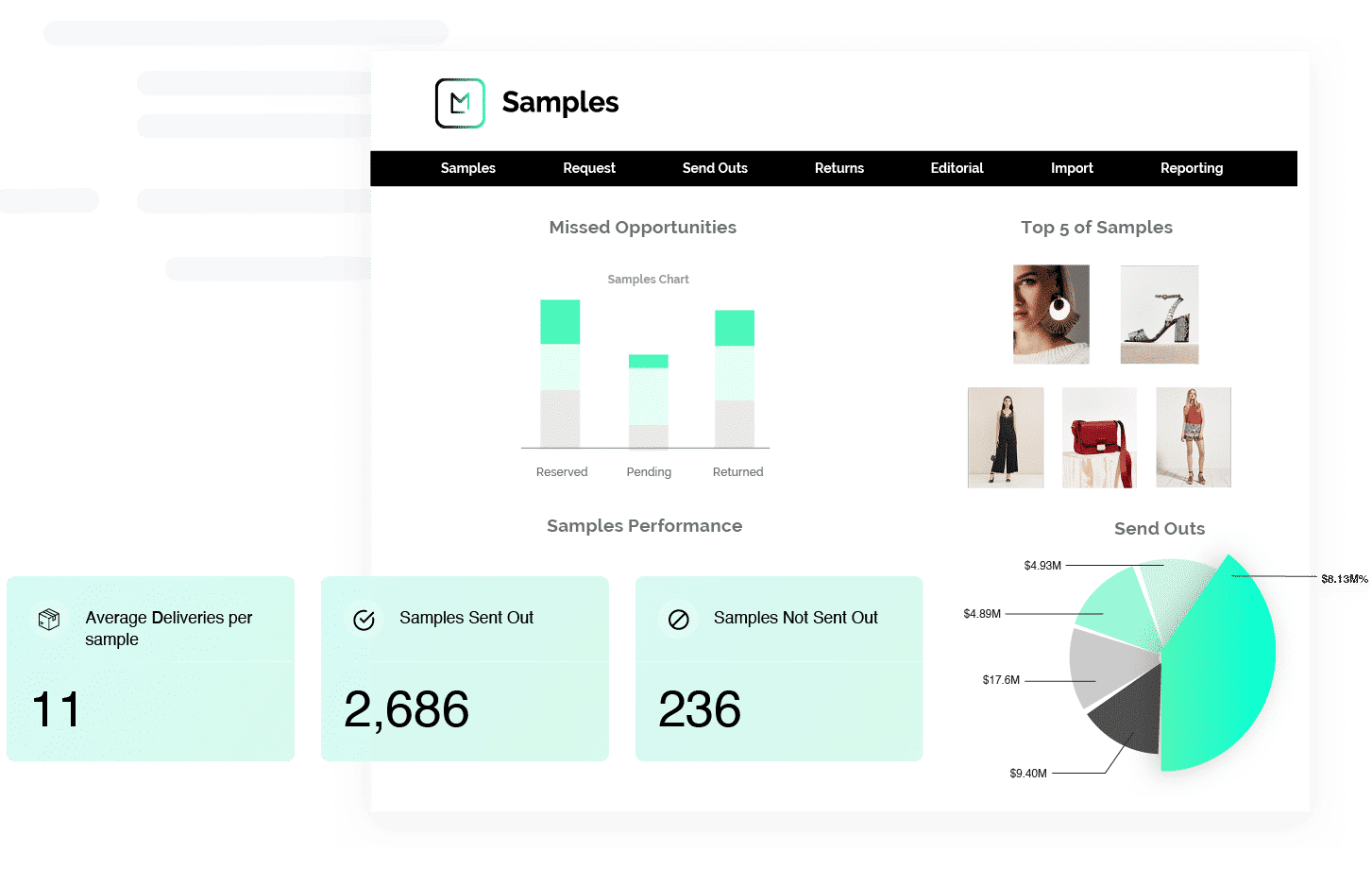Did you know that the fashion industry ranks second in the list of the most polluting industries (after the gas and oil sector)? The truth is, you probably do. No matter your level of seniority, the term sustainability has likely woven itself into the fabric of your brand’s ethos or, at the very least, its political milieu.
According to the report ‘Making Sense of Sustainability’, published by Launchmetrics in 2022, the MIV® for sustainability-related content grew by 54% during the first semester of 2022 in comparison to the first semester of 2021, accounting for $2B and $1.3B respectively. And this trend has continued to grow since last year.
While we can’t all be Patagonia founder Yvon Choiunard – who gifted his $3 billion company to the cause of fighting the climate and extinction crisis – it’s imperative fashion brands make a climate commitment in 2023.
But where to begin? Let’s put samples under the sustainability microscope. After all, a finished garment can require up to 20 samples (and don’t get us started on tracking losses).
Read on to discover how simply tweaking your sample processes can improve resourcefulness, minimize losses, and, in turn, have a big impact on your carbon footprint.
In this article you’ll learn…
What is the impact of samples on the environment?
Let’s start this topic with a little bit of context. Did you know that one cotton product represents 4 years worth of drinking water for 1 person…?
Samples are products that fashion brands produce in a reduced number for internal use or distribution of their collections. For example, samples may be used by the eCommerce teams to prepare the images for the web, by the PR team to send to the media, or by the showroom team to use with potential buyers.
Now, when we talk about large textile companies, especially mass-market firms, this “reduced” number of samples can be multiplied by a hundred, a thousand or even more. The reason is that many of these samples are lost between departments, the delivery by journalists is often delayed without anyone having visibility on where they are, etc.
And then one, two, 10, 100 people request samples to do their job. Samples that are finally produced from scratch.
And just like with the previous cotton example, we could give quite devastating examples with denim, leather, polyester…

Of course, these samples are necessary as part of the fashion supply chain, but the difference between producing a responsible number of samples and overproducing unnecessary pieces depends on a single element: control over them.
Cut your sample losses
For large, mass-market brands, keeping on top of a sample’s status is no mean feat. Unfortunately, mismanagement is a common issue that’s also costly for the environment.
The loss of samples is part of the daily life of fashion brands. And both in the case of luxury and mass-market brands, this can mean the loss of thousands of euros.
These losses occur for a simple reason: organizations do not have a fast, simple and automated control system for their samples. Departments often request samples by email, pick them up at the merchandising office or, worse, the control system is limited to a sheet of paper or a disorganized Excel spreadsheet.
With dedicated sample management systems, brands can prevent loss by having a real-time view of sample locations. Each item is assigned a unique barcode which is scanned periodically, so the destination or location is logged and updated in the app.
Evolved solutions also incorporate RFID technology that allows users to scan everything in their office or showroom at once. Managers can then generate a report to reveal available and missing sample results across two separate lists, making it easy to define the next course of action. Brands gain full control over materials, minimizing loss and their carbon footprint in the process.
Save time and be more efficient
Checking sample availability should be a seamless process. If you’re looking for a certain piece, making multiple calls or emails to find it results in wasted time and energy.
If a request comes in, fast and total sample visibility is essential. Searching for desired pieces by organized categories, such as ‘color’ or ‘type’ could make all the difference and save you a lot of time!
At the click of a button, you can also view which department or external party has your sample, making it easy to request its return. Maybe your e-commerce team is shooting the piece for your website or an influencer has hold of it. With this data, you can identify and directly contact the current owner, saving you time, money, and precious energy.
And this also translates into efficiency! For example, in the case of a press and communication department, it is essential to satisfy as many sample requests as possible to ensure greater editorial coverage season after season. How to achieve this without ordering new samples week after week: having full visibility on what samples are available and when.
We love the story of our client Jacquemus who was able to increase the samples delivered by 30% thanks to the digitization of his entire sample management system.
Inventory – plan for the planet
Fashion is fast-paced. But if there is something good that technology has offered us, it is data. Digitizing your entire sample management system would not only offer you easier and more agile control on a day-to-day basis, but it would also give you an overview at the end of the season of those samples that have been most used by certain departments; which pieces have been most requested by journalists or the exact number of samples that have finally been used out of the total produced.
All this information allows you to anticipate future seasons, better estimate the needs of various departments regarding the use of samples, and in conclusion: save money and reduce the impact on the environment.
Conclusion
The industry has changed rapidly in recent years, with more fashion brands recognizing the sustainable benefits of digitizing operations.
But regardless of the multiple sustainability benefits, brands want to be producing fewer physical samples to save money and streamline processes.
With a cloud-based platform such as Launchmetrics Samples, you can do more with fewer physical materials, combat sample loss, and save money in the process.



